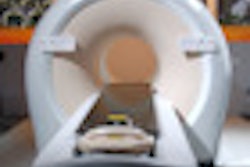The U.S. Centers for Medicare and Medicaid Services (CMS) this week proposed a new policy that could make it easier for new oncology PET tracers to win reimbursement. PET advocates are disappointed, however, that the change won't apply to tracers used for neurology and cardiology applications.
In a December 13 memo, CMS proposed that local Medicare administrative contractors (MACs) determine coverage within their respective jurisdictions for oncologic PET imaging using radiopharmaceuticals for indications that are approved by the U.S. Food and Drug Administration (FDA).
If the proposal is approved, the change would remove national noncoverage for any uses of the FDA-cleared PET radiopharmaceuticals that have not been determined nationally. The proposal would also cover hybrid modalities, such as PET/CT and PET/MRI.
Currently, CMS reimburses for four radiotracers for clinical PET imaging: F-18 FDG, rubidium-82 (Rb-82), nitrogen-13 (N-13) ammonia, and F-18 sodium fluoride (NaF). The change would not apply to any use of these radiotracers.
The change also would not prevent CMS from determining national coverage for any radiopharmaceutical uses in the future. If the agency did make such a determination, it would supersede local contractor decisions.
CMS' action comes after a formal request regarding national noncoverage from the Medical Imaging and Technology Alliance (MITA), with the support of the American College of Radiology, the Society of Nuclear Medicine and Molecular Imaging, the Council on Radionuclides and Radiopharmaceuticals, and the World Molecular Imaging Society.
In a March 30 letter, the organizations stated that "recent advances in imaging and CMS' past experience with PET coverage no longer support a clinical rationale for a pre-emptive national noncoverage policy for new PET radiopharmaceutical agents that undergo rigorous FDA review and approval."
Needless to say, MITA is pleased that CMS is taking this action.
"We now believe that at least the new oncologic PET tracers will be on an equal footing with other drugs and be eligible for coverage at the local level after the FDA approves them," Gail Rodriguez, MITA's executive director, told AuntMinnie.com. "However, it is more limited than we had hoped, because it did exclude cardiac and neurologic new PET tracers."
While Rodriguez believes there is sufficient research and evidence to support the efficacy of cardiac PET tracers, she added that there is still somewhat limited information on the benefits of PET tracers for neurological conditions such as dementia and Alzheimer's.
If the CMS proposal is enacted, PET radiopharmaceutical companies "will find it easier to gain coverage for their newly approved PET tracers and procedures," Rodriguez said. "That's the good news. We want to make sure Medicare beneficiaries have access to these studies. And hopefully it will start setting a precedent so that other new tracers for neurologic and cardiac applications will have the same equal playing field in the future as oncologic applications have."
As for any geographical differences in how local Medicare administrative contractors might rule on reimbursement of PET radiopharmaceutical use in oncologic applications, Brian Abraham, MITA senior policy director, said that local decision-makers "generally have very similar coverage policies on the items that they consider at the local level. They all talk to each other, so there is not a lot of difference between them."
MITA plans to submit comments in support of the CMS proposal and will ask the agency to extend the same policy to cardiac and neurologic PET tracers.



















